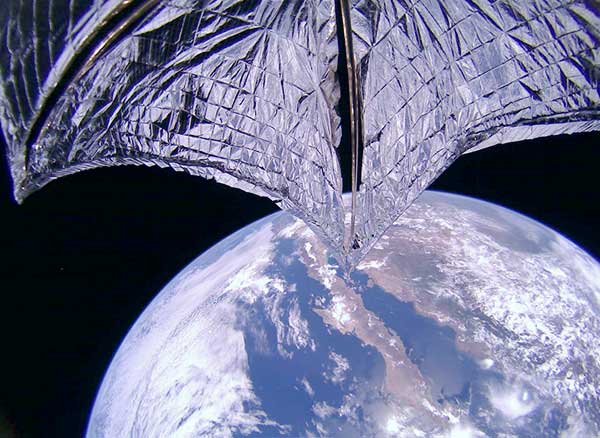The Planetary Society says that its LightSail 2 satellite has demonstrated the ability to change its orbit by the power of light.
Source: Parabolic Arc
Since unfurling the spacecraft’s silver solar sail last week, mission managers have been optimizing the way the spacecraft orients itself during solar sailing. After a few tweaks, LightSail 2 began raising its orbit around the Earth. In the past 4 days, the spacecraft has raised its orbital high point, or apogee, by about 2 kilometers. The mission team has confirmed the apogee increase can only be attributed to solar sailing, meaning LightSail 2 has successfully completed its primary goal of demonstrating flight by light for CubeSats.
“We’re thrilled to announce mission success for LightSail 2,” said LightSail program manager and Planetary Society chief scientist Bruce Betts. “Our criteria was to demonstrate controlled solar sailing in a CubeSat by changing the spacecraft’s orbit using only the light pressure of the Sun, something that’s never been done before. I’m enormously proud of this team. It’s been a long road and we did it.”
The milestone makes LightSail 2 the first spacecraft to use solar sailing for propulsion in Earth orbit, the first small spacecraft to demonstrate solar sailing, and just the second-ever solar sail spacecraft to successfully fly, following Japan’s IKAROS, which launched in 2010. LightSail 2 is also the first crowdfunded spacecraft to successfully demonstrate a new form of propulsion.
“For The Planetary Society, this moment has been decades in the making,” said Planetary Society CEO Bill Nye. “Carl Sagan talked about solar sailing when I was in his class in 1977. But the idea goes back at least to 1607, when Johannes Kepler noticed that comet tails must be created by energy from the Sun. The LightSail 2 mission is a game-changer for spaceflight and advancing space exploration.”

































Leave a Comment
You must be logged in to post a comment.